How to Develop a Courier Management System
The development of courier companies, like any other type of business, involves the introduction of innovations based on the needs of customers and the needs of the organization itself: in management, in technology, in the services provided. This article will look at an innovative approach to developing a courier management system and what features to consider during implementation.
Custom Courier Service Management Software vs 3d-Party Solutions
Custom solutions and third-party solutions each have their advantages and disadvantage. Custom solutions are made just for you, specifically to meet your needs, but demand constant support. You must teach new team members how to utilize the solution, ensuring they know its benefits and drawbacks. Your team must also manage any required modifications or improvements to the code base, thus they must possess the skills and tools necessary. To have custom courier software, you must ultimately be aware of the issues that need to be resolved and their straightforward remedies.
The main difference between in-house and third-party courier management software is the entity responsible for the delivery operation. Businesses that adopt the internal delivery model have control over the delivery process. Giving the delivery service to a third-party company entails entrusting the delivery to the contractor. There is no superior model — each has its benefits and drawbacks.
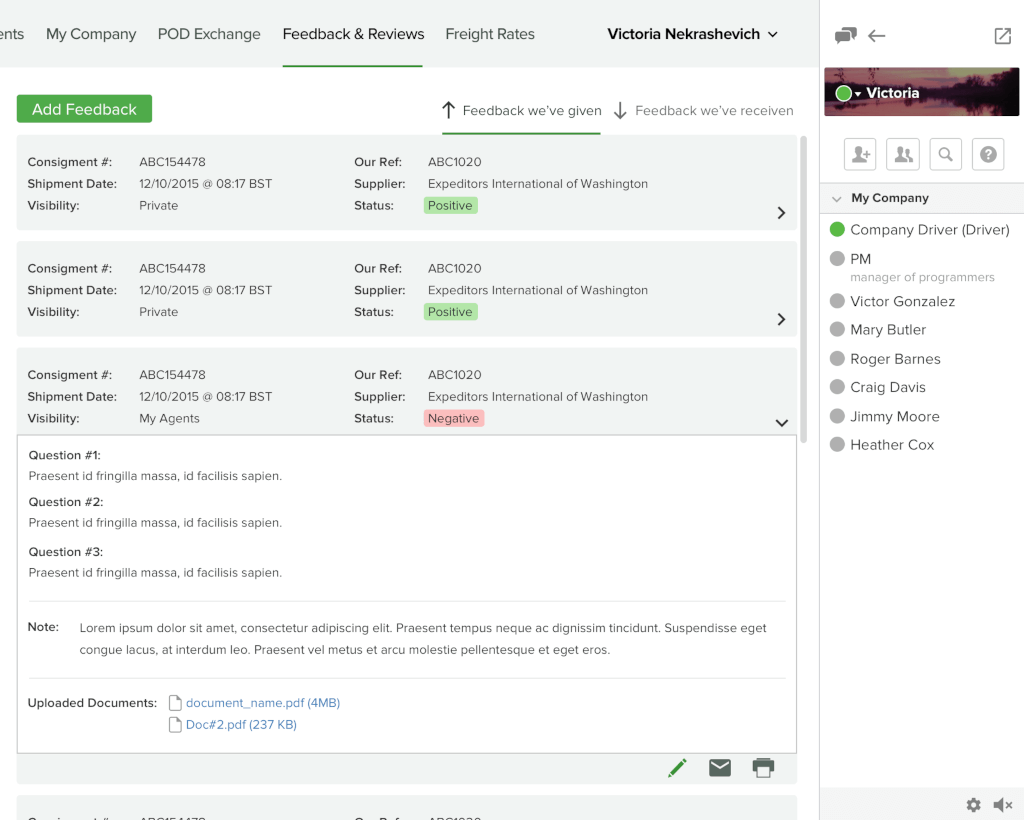
Cost
Every business’s ultimate objective is to make a profit. To do this, each company must develop a budget that allows the distribution of the whole budget in a way that maximizes profits. Make sure your distribution models can support your business over the long run because their cost can affect your company’s growth. An in-house courier management system incurs many costs. Be sure to do the math before deciding one way or another.
Rapidly expanding startups and businesses can take advantage of the infrastructure already provided by third parties, which also has low overhead expenses. Make sure you carefully select your third-party courier management system because it will become an extension of your business and represent your brand with every shipment.
Customization
While small retailers can run smoothly with only emails, spreadsheets, and dedicated purchasing and customer service CRM tools, companies with high-volume shipping need to integrate a complex set of digital platforms.
If you have the funds to invest in intelligent systems, you can manage, monitor, analyze, and optimize every delivery aspect. A cloud-based warehouse management system (WMS) keeps an eye on every fulfillment aspect. An e-commerce store integrated with a customer management system, real-time inventory listings, and online tracking creates a seamless purchase experience that connects all parties involved.
Companies with low budgets or new businesses looking to scale slowly can take advantage of the digital platforms offered by third-party delivery services.
Better Route Planning
Mapping and navigation software development for managing and tracking vehicles on the road, ensuring transportation security.
Such solutions are used for:
- marine navigation;
- air and land transport tracking;
- location identification;
- digital map managing.
Safety
This is something that third-party services cannot promise at the same level. However, the security of your data and that of your customers is paramount and is one of the key factors in deciding in favor of custom development.
Сourier Management Software Features
Shrinking delivery time, ballooning customer expectations, and cut-throat price wars make managing deliveries a herculean task. To find the right balance between all these aspects, it’s important to ensure robust last-mile delivery operations. Delivery management software can empower businesses to shrink costs, drive super-fast deliveries and help keep your customers loyal.
But not all delivery management software available in the market will address your pain points.
Here is a quick checklist of features that you should look for in delivery management software before you invest in one.
Personal Profile Management
Personal Profile Management is a critical factor in ensuring successful on-demand delivery. Once the order comes in, the next important question is how it should be assigned to meet the SLA's deadline. It depends on multiple factors. Earlier, organizations would assign tasks manually, which needed much effort to coordinate with the team. This part of a delivery management solution is automated with the delivery scheduling software.
A courier management software provides the operational teams with an interface to schedule pick-ups and deliveries. Considering all the granular details, the scheduling algorithm assigns the job to the most suitable resource. The automated scheduling and route optimization saves critical time and provides end-to-end visibility into the dispatch module.
Order Information
When your operations team knows exactly where drivers are at all times, you keep drivers accountable and efficient. With a dashboard that alerts you when a driver is running late, you can manage any exception before it gets real.
Navigation & Route Optimization
This feature requires adding as many maps as possible to cover all the countries your company is operating. Besides, we advise you to constantly improve algorithms and select the most efficient route to ensure you slash fuel costs, waiting time, and time-to-deliver.
Proof of Delivery
Smartphones with GPS have revolutionized the entire process of traceability, making real-time updates a necessary norm. Push notifications have altered customer expectations. Customers want to be involved in tracking their order delivery at all times. Good delivery management software must allow customers to track their deliveries at every stage and any alerts required. Providing access to the delivery person’s location is also essential so that the customers know where he has reached and can guide him if need be.
For organizations, this live delivery tracking helps get a lot of critical information, like tracking the fleet, viewing the route taken, and analyzing pick-up/drop timings. All these insights bring more transparency to build leaner delivery operations. Also, delivery route planning software helps to get optimized routes, which adds to delivery efficiency.
Communication Tools
For all stakeholders involved in the delivery process, courier tracking software must offer a comprehensive and dynamic communication solution. As a result, linking each system component is delegated to software designed to manage business processes. The most typical installation is a communication module, which can dynamically define events to be sent to customers at particular times.
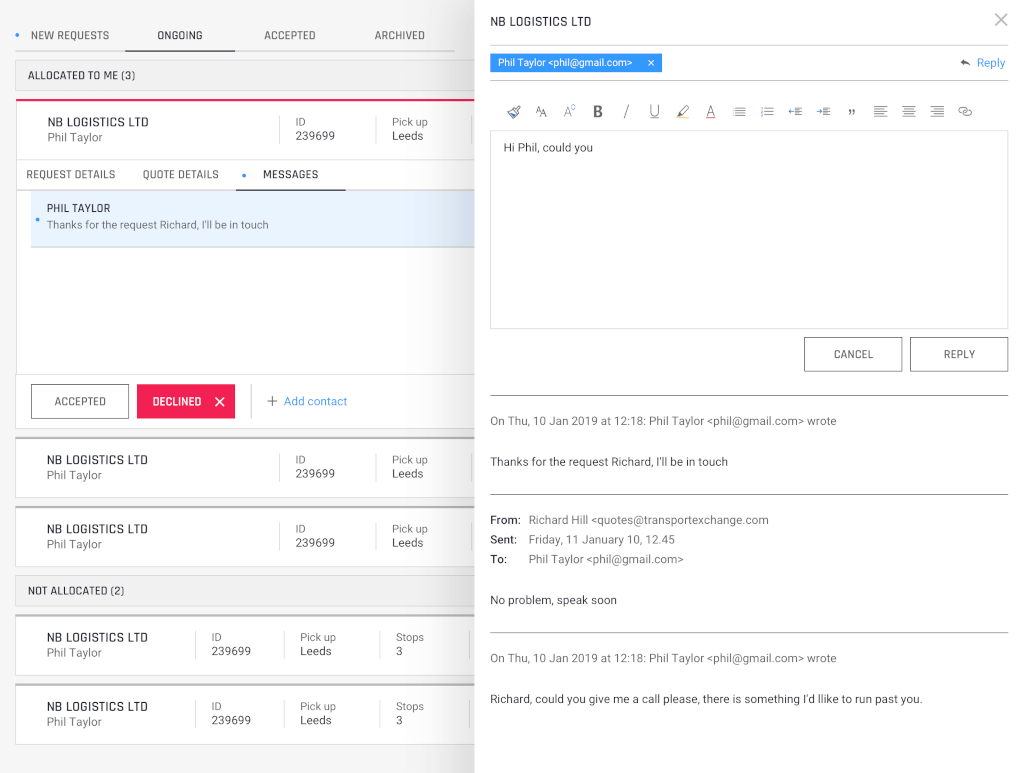
Users can choose from the following channels:
- SMS;
- Email;
- Notification;
- Webhook (API Call);
The message could contain the following information:
- Tracking Link;
- Order Invoice;
- Driver Phone Number;
- Vehicle Information;
- Order Price;
During the order process, all parties can get messages about all occurrences through communication tools. The following people can be recipients:
- Individual Customers
- Business Customers
- Pick-up Contact
- Drop Off Contact
- Driver
Push Notifications
Push Notifications are a must-have feature when you develop a courier tracking system.
Thanks to Push Notifications, your drivers will stay up to date with the most important events: new delivery orders, changes to current orders, status updates, etc. It can help your couriers always catch everything important and react quickly.
In Admin Panel, you can set the exact list of cases to trigger Push Notifications. You can read further what else users should find in their admin panel.
Admin Panel Features for Courier Management Software
The Admin Panel is the necessary tool that helps to customize the app and manage drivers and customers. Here are a few features that should be in every courier software admin panel.
ERP\CRM Connection
Many companies face a challenge in integrating courier services with an ERP system.
Order fulfillment is a critical element of an eCommerce process and business operations. It ensures that customers know that their orders will be dispatched quickly and efficiently is one of the key factors in repeat business and customer satisfaction. While many companies pride themselves in great customer service through quick and efficient service, a wide number require employees or dedicated dispatch teams to manually extract orders from business software and place them with a carefully selected courier service for fulfillment.
Repetitive manual processes can be costly, time-consuming, and a pain that many businesses can live without. Automating the processing of orders for fulfillment can not only improve the efficiency of your dispatch processes but will also assist in maintaining high customer service levels.
Establishing seamless courier system integration with an ERP system enables the automatic synchronization of information between business systems and applications with your selected courier service(s). In exchange, it offers the capacity to do away with unnecessary personnel administration, which can significantly reduce order-to-dispatch times.
Courier Tracking
With Courier Tracking feature, the operations team can access detailed statistics about every driver location to keep them accountable and efficient. Also, the dashboard shows that when a driver runs late, and the customer can be warned about the delay.
Order Delivery Management
Do you have multiple fleets of drivers or handlers who operate out of different stores? From your admin dashboard, you can easily manage them separately and control where exactly your order is right now and the estimated delivery time.
Manage Couriers
SMS alerts are automatically provided to clients at every crucial point in the courier route so that drivers may concentrate on their trips. They can quickly and get in touch with the customer in the app if necessary. A safer delivery experience is made possible by crucial elements like proof of delivery.

Fleet Management
Fleet management aims to maximize efficiency, increase productivity and improve safety for an organization’s vehicles and drivers. This is often achieved by using a combination of vehicle tracking, reporting on fuel consumption, monitoring of driver behavior and management of vehicle maintenance.
Revenue & Expense Management
Quit using a calculator. You can track any driver’s cash payments from your dashboard if you run a cash business. You can also record a float, offer cash bonuses, and settle up at the end of a shift.
Dashboards
The easy tab or column in the app that allows you to access all information related to the warehouse placed orders, and orders shipped.
Communication
Learn about your customers’ wants and get access to personally monitor their journey or order request. Know their feedback and associated parties involved in delivery through courier delivery tracking app. You can also send personalized messages and offers to a set of customers for business promotion through the app.
Agent API
The Symphony Agent is responsible for encryption and decryption of messages and content sent to and from a bot. As a result, the Agent API is used to build applications that send and receive messages and content.
Cost
The courier delivery app is made with the integration of these domains (as mentioned above). To work on your cost, you can make adjustments with the sub-features and the functionality of each domain.
If you are thinking of making an app with all 4 domains and all of them having features as stated above, the cost estimates go around 50000 US dollars on an average.
To add more features, better graphics, and the framework you choose to develop parcel service apps could exceed even 140 000 US dollars. The price keeps fluctuating as per your needs and requirements.
Courier Technologies
Due to all above, the development of an mobile courier management system is a quite complex project from the technical perspective. Though, with the right tech stack, you can facilitate this process, saving your time, money and other resources:
- We recommend using React Native as a framework — a key tool for mobile application development. With its help, you’ll be able to create both Android and iPhone applications with the same codebase.
- An in-app chat feature can be implemented with the help of Sendbird SDK.
- You’ll almost surely need Google Maps services to implement tracking into your delivery system.
- To cut down route planning time and show more efficient routes, you can use the Routific API.
- Some good Push Notifications services include Firebase Cloud Messaging, OneSignal and Urban Airship.
Examples of Creating Courier Management Software
Our company has been developing software for logistics companies since 2007 and we continue to support some projects to this day.
The busiest courier SaaS platform for the logistics industry
Trusted by over 7,000 businesses since 2000. Processing over 170,000 loads per month. Handling and managing more than 50,000 available vehicles of its clients. Making over £190M worth of contracts per year. It serves the full flow from posting the load to its final delivery helping transportation companies and individuals to do their work with ease.
This courier SaaS product was created in the early 2000s and after successfully passing the post-MVP phase and getting good traction, they had to grow an IT department which was difficult and expensive in the UK. We met them at the beginning of active growth, all their software required refactoring and modernization. We developed a transformation plan and run a small pilot project to show how we can help and solve the problems they had. That was the beginning of long and profitable cooperation.
Courier management software development
We started with a dedicated team of 6 IT engineers in 2007 and today it is a large IT department that consists of 34 engineers including front and back ends development, database, and big data engineering, data science, server infrastructure management, QA, task management, and business analysis. The whole team works closely with a core business team in the UK showing an example of effective and long-term collaboration between business and offshore development teams.
The whole set of fleet and load tracking features were implemented for couriers and customers. The platform tracks all vehicles and loads and visualizes them on the map using 15+ TMS providers or GPS in smartphones.
The map shows current loads with destinations and available transport with movement direction.
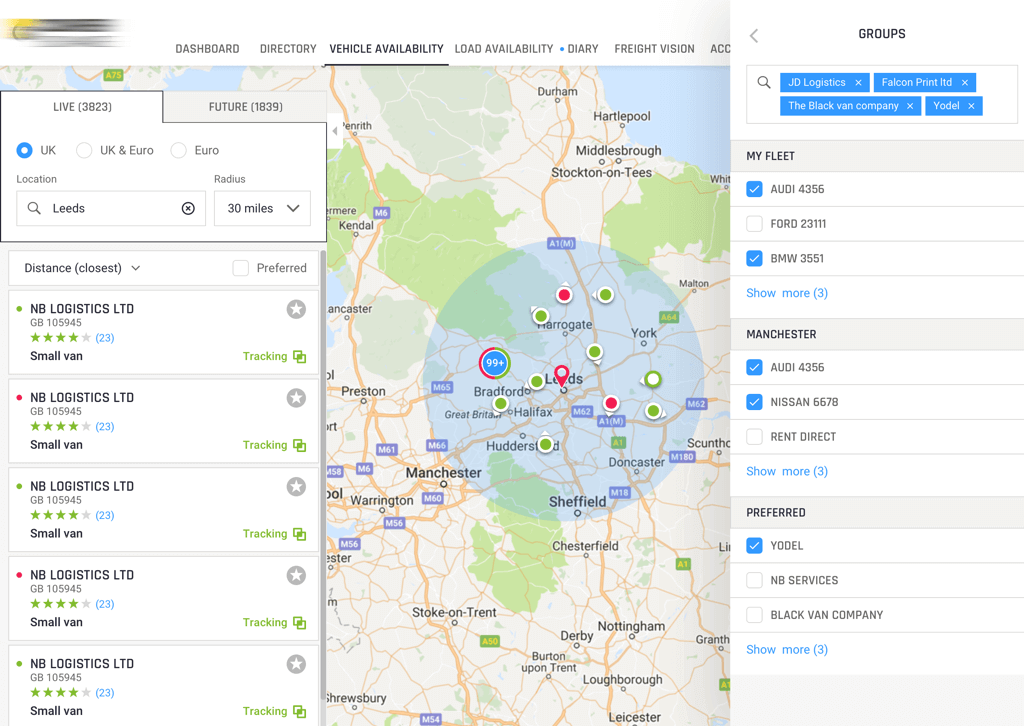
Delivery ETAs, delays, fleet and load statuses, route history are displayed and updated on the fly.
All map visualization and geocoding were initially done with Google Maps and now changed to Here WeGo.
Courier companies can add their drivers and vehicles. A simplified UI was done for individual drivers with only one car. The courier manager can post jobs to subcontract a driver.
Fleet real-time management is done with a web or mobile app and telematics integration systems.
Couriers can filter loads by many parameters such as vehicle type, region/area, etc., expose their availability, look for the closest loads, apply for a job by sending a quote, communicate with customers using an external communication tool.
The back-end we built is capable to handle and process:
- 5,000 members in the EU who brought over 50,000 vehicles;
- 230,000 loads per month;
- Tons of real-time tracking requests from all fleet we have in the system;
- Hundreds of thousands of internal messages, emails, and SMS alerts sent between customers and companies;
- 7 white label partners working simultaneously;
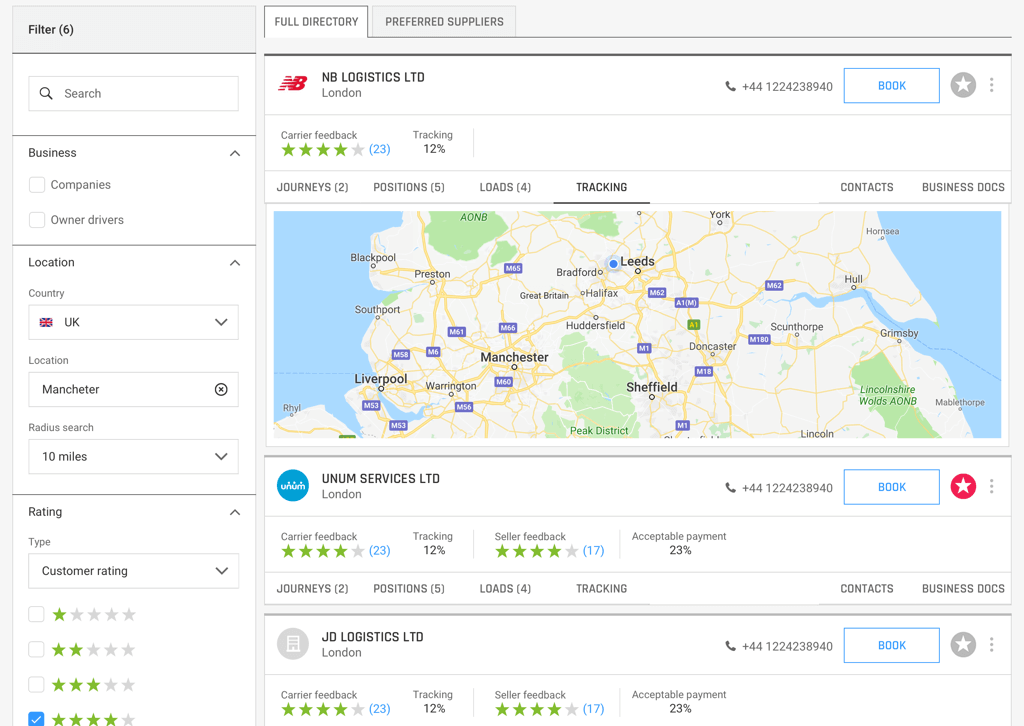
Today we are proud to be a part of the highly technical and very successful SaaS solution. Building long-lasting relations is never easy, we have been accurate with all the details through the years.
Even today we are striving to improve our integration in the business optimizing our costs and processes. And yes, we would be glad to share our expertise in setting up long-lasting relations for any other SaaS tool that is about to take over the world.
Courier network and communication SaaS tool
It helps users to find new partners and agents, documents and feedback exchange, rates posting, chatting, etc. It’s a professional network for courier and logistics workers. Implemented as a B2B SaaS tool it connects service providers and customers in the transportation industry closing their communication needs and helping to optimize processes.
This project was a continuation of our other brainchild. Our customers with a huge experience in the transportation domain found a serious gap in the industry - a lack of a communication tool for courier service providers and their customers. A lot of inefficient business communication is happening between professionals and freight customers.
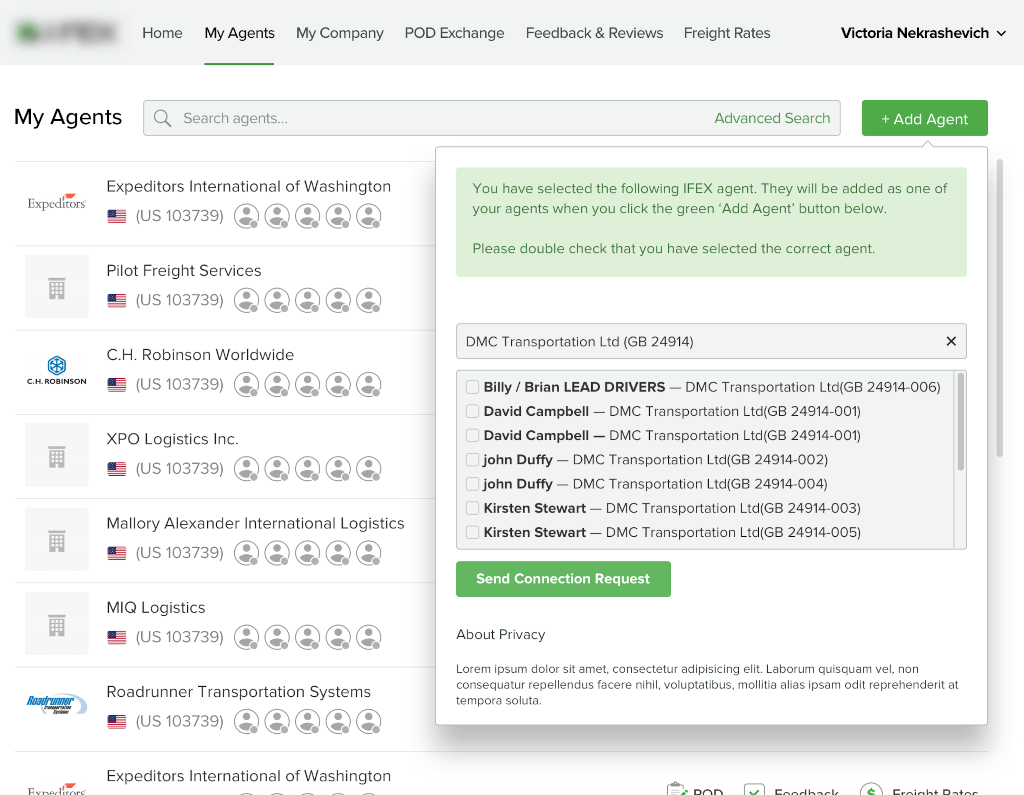
Originally this tool was planned to be a part of another customer's logistics SaaS system. We focused on designing and architecting the main features of this communication tool to test them on its real customers so we had quite a big list of existing early adopters. After polishing this solution and gaining positive feedback from its clients, we redesigned this tool into a SaaS platform with a subscription model and set up an additional business for our customers.
Sum Up
The market has shifted to digital platforms and that is why sites like Amazon have become a major hit. However, these delivery service apps work based on logistics. It needs different panels and domains to work. But, in order to make everything run smoothly and also make your business grow, depending on courier service apps is important. And if you make one, you can earn even more with a one- time single investment.
